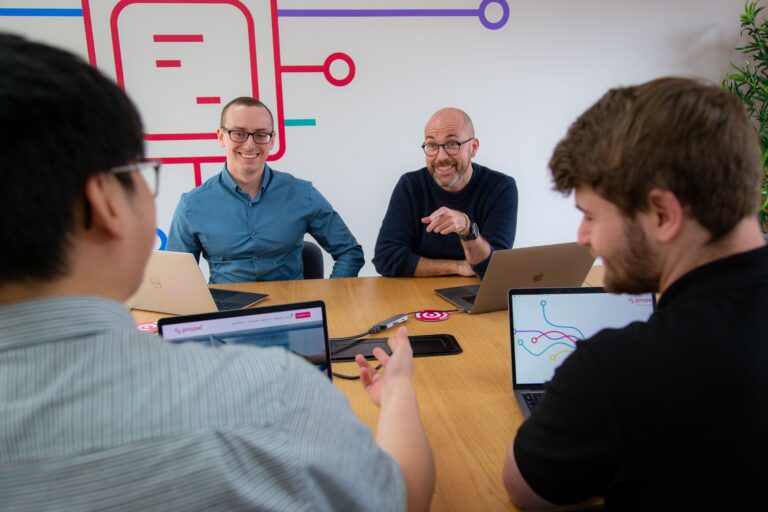In some ways, the Great Resignation appears to have become the Great Reimagination for HR and People & Culture teams. With an unprecedented surge in remote work options, the rise of the gig economy and increased contingent work opportunities, organisations in all industries and regions have faced a variety of hiring challenges for some time now.
To develop a deeper understanding of what’s driving today’s hiring, background screening trends and where opportunities may exist to prepare for the future of hiring, we conducted a study*. The report provides a realistic outlook on the state of hiring, background screening, and candidate experience — as expressed by more than 1,200 HR professionals and over 3,700 recent job seekers globally.
If hiring has been a struggle, you aren’t alone
It’s no secret that the country’s talent deficit is becoming critical, with 69% of UK-based employers admitting to experiencing skill shortages. For this reason alone, it comes as little surprise that most HR professionals reported that they are currently experiencing hiring challenges, with our EMEA-specific data revealing that 46% of businesses have been struggling to find enough qualified candidates to fill positions. However, skills shortages are not the only challenge impacting hiring teams, it’s also worth highlighting that 28% of HR respondents believed that they were missing out due to direct competitors winning the talent they wanted to hire, while 24% revealed that they were facing hiring complications due to new types of work emerging such as gig and remote work. In contrast, only 8% of participants stated that they had no major hiring challenges, which highlights just how many HR professionals and businesses are struggling with hiring in some form.
Understanding the shift in hiring dynamics
To better understand the trend of candidates wielding more power than ever in the hiring process and the challenges this trend poses to HR professionals, we knew we needed to hear from job seekers themselves about their experiences and perspectives. We asked recent job seekers from around the world — who had gone through the hiring process, including background screening procedures, within the last 12 months — why they would consider dropping out or why they had in fact left the hiring process early.
The responses certainly identified a disparity between employers and candidates when it comes to the recruitment experience itself. What we found particularly interesting here is that the majority of candidate reasons for exiting the hiring process early either relate to the complexity of the hiring process (33%), were indicative of a time-consuming experience for the end-user (35%), or had an issue with the background screening process (22%), rather than a decision to simply take another role elsewhere or stay at a previous job. Clearly, candidates are finding the recruitment process itself a barrier, but this information seemingly isn’t reaching hiring teams themselves. In fact, only 9% of the HR professionals we surveyed believed that candidates would find their hiring process complicated.
The importance of effective background screening
Just as effective marketing, interviewing, and onboarding are central to the hiring process, background screening is also a critical component that helps organisations take the next step and make offers and hire candidates with full confidence. While it may be tempting to think of employment screening as just another step to complete in the hiring process, the way that background searches are conducted can actually have a major impact on how candidates experience and perceive the overall hiring effectiveness of an organisation that they are considering joining.
In fact, more than half (54%) of our candidate respondents agreed that their background screening experience made them feel more confident about working with the organisation or pursuing the job. Clearly, professionals place a significant value on feeling safe at work and knowing that a future employer has a robust screening process certainly appears to have a positive impact on the candidate experience. However, that doesn’t mean that change isn’t necessary.
Traditional background screening methods are notoriously lengthy and are very much in need of an update. When we asked HR professionals and hiring managers to consider a set of forward-looking concepts about how background screening may change in the future, out of our global respondents, only 12% believe their background screening process will remain relatively the same over the next two years, reinforcing the aforementioned stereotype. Of the 88% who do foresee changes, there are a variety of elements that they expect to evolve, however, the most popular choice was that screening will become “more thorough.”
Although being thorough is certainly an important aspect of background screening, it’s crucial that this does not come at the expense of efficiency, especially as we know some job seekers consider dropping out of the hiring process when things become complicated or time-consuming. And for those in the gig economy – whose time really is money – lengthy processes will only lead to increased numbers of dropouts before the onboarding stage. It is possible to be more thorough while also being efficient and providing a great candidate experience.
Using Digital Identity to improve hiring and engage candidates
Making the switch to Digital Identity will be a critical component towards not only speeding up the hiring process and making it simpler for all parties but also providing candidates with full confidence in their safety, which our respondents highlighted as a key motivator for them.
Opting for a digitalised Right to Work process will mean that, once the employer sends the request to the applicant, that’s the end of their responsibilities. The revised ‘one touchpoint’ process removes the need for the documentation to also be verified by the employer, saving valuable time for all parties and safely streamlining a process that can often consist of duplicate requirements or lengthy form filling.
There’s no doubt that today’s hiring environment is challenging and will only become more complex as uncertainty remains on the horizon. However, there are opportunities to improve age-old processes and ultimately create a better, more efficient, hiring strategy.









